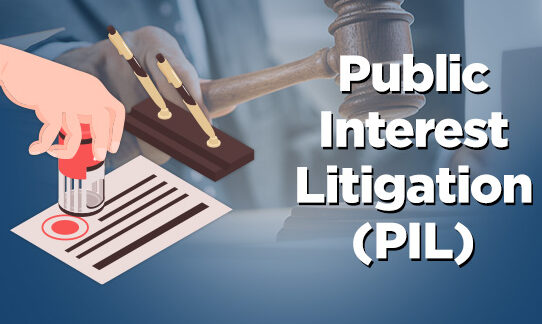UNDERSTANDING THE ROLE OF PUBLIC INTEREST LITIGATION (PIL) IN INDIA’S LEGAL FRAMEWORK
Introduction: Public Interest Litigation (PIL) has emerged as a powerful tool for justice and social change within India’s legal framework. PIL enables citizens to approach the courts on behalf of the public interest, allowing marginalized and disadvantaged sections of society to seek justice and uphold their rights. This article aims to delve into the significance, evolution, and impact of PIL in India’s legal system.
- Historical Context and Evolution of PIL: The roots of PIL in India can be traced back to the early 1980s when the judiciary recognized the need to address societal issues that were not adequately addressed through traditional litigation. The concept of PIL evolved to widen the scope of access to justice and empower the underprivileged. It represented a departure from the conventional model of litigation, where only aggrieved parties could approach the courts.
- Constitutional Basis and Legal Framework: PIL finds its foundation in Article 32 and Article 226 of the Indian Constitution, which guarantee the right to constitutional remedies. The judiciary, recognizing its role as a custodian of fundamental rights, has interpreted these provisions liberally to promote social justice and protect the public interest. Statutory provisions, such as the Public Interest Litigation Rules, have also been introduced to streamline the process of filing PIL petitions.
- Expanding Access to Justice: PIL has played a crucial role in enhancing access to justice for marginalized communities and disadvantaged groups. It has become a mechanism for addressing systemic issues, including human rights violations, environmental degradation, corruption, gender inequality, and inadequate public services. By allowing public-spirited individuals and organizations to bring matters of public importance before the courts, PIL has facilitated the empowerment of the voiceless.
- Catalyzing Judicial Activism: PIL has been instrumental in fostering judicial activism in India. The judiciary, through its proactive approach, has intervened in matters of public interest, thereby shaping policies and influencing governance. PIL petitions have led to landmark judgments that have had far-reaching implications, such as banning child labor, protecting the environment, ensuring transparency and accountability, and safeguarding the rights of marginalized communities.
- Criticisms and Challenges: Despite its significant contributions, PIL in India is not without criticisms and challenges. Some argue that excessive judicial intervention through PILs can encroach upon the domain of the executive and legislative branches, leading to judicial overreach. Additionally, concerns have been raised regarding the misuse of PIL for personal or political motives, leading to the proliferation of frivolous petitions.
- Strengthening Democracy and Rule of Law: PIL has strengthened India’s democratic fabric by promoting transparency, accountability, and the rule of law. It has instilled confidence in the judiciary as an institution that upholds justice and protects the rights of citizens. PIL has also played a pivotal role in shaping public discourse, raising awareness about critical issues, and fostering a participatory democracy.
Conclusion: Public Interest Litigation (PIL) has revolutionized India’s legal landscape by providing an avenue for the marginalized to seek justice and challenge systemic injustices. Through PIL, the courts have become the guardians of the public interest, ensuring that the principles of justice, equality, and social welfare are upheld. While PIL faces criticisms and challenges, its role in advancing the cause of social justice and protecting the rights of citizens cannot be undermined. As India’s legal framework continues to evolve, PIL will remain a powerful instrument for bringing about positive change in society.



